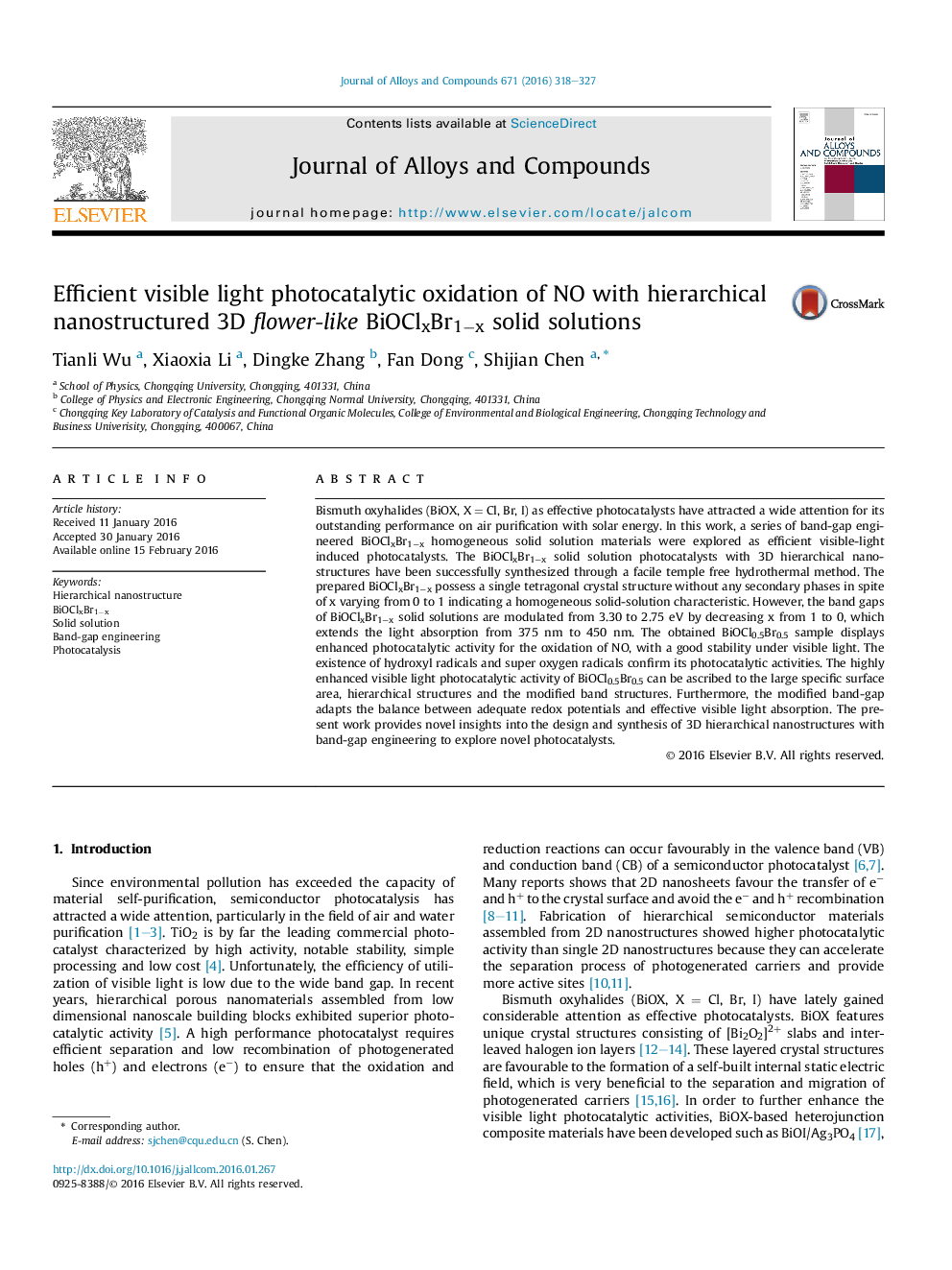| Article ID | Journal | Published Year | Pages | File Type |
|---|---|---|---|---|
| 1606048 | Journal of Alloys and Compounds | 2016 | 10 Pages |
•BiOClxBr1−x homogeneous solid solutions with hierarchical nanostructures were synthesized.•The band gaps were largely modified and the light utilization improved.•The BiOCl0.5Br0.5 exhibits superior photocatalytic performances for the oxidation of NO.•Modified band-gap adapts the balance between adequate redox potentials and light absorption.•The mechanism behind the enhanced photocatalytic performance are discussed.
Bismuth oxyhalides (BiOX, X = Cl, Br, I) as effective photocatalysts have attracted a wide attention for its outstanding performance on air purification with solar energy. In this work, a series of band-gap engineered BiOClxBr1−x homogeneous solid solution materials were explored as efficient visible-light induced photocatalysts. The BiOClxBr1−x solid solution photocatalysts with 3D hierarchical nanostructures have been successfully synthesized through a facile temple free hydrothermal method. The prepared BiOClxBr1−x possess a single tetragonal crystal structure without any secondary phases in spite of x varying from 0 to 1 indicating a homogeneous solid-solution characteristic. However, the band gaps of BiOClxBr1−x solid solutions are modulated from 3.30 to 2.75 eV by decreasing x from 1 to 0, which extends the light absorption from 375 nm to 450 nm. The obtained BiOCl0.5Br0.5 sample displays enhanced photocatalytic activity for the oxidation of NO, with a good stability under visible light. The existence of hydroxyl radicals and super oxygen radicals confirm its photocatalytic activities. The highly enhanced visible light photocatalytic activity of BiOCl0.5Br0.5 can be ascribed to the large specific surface area, hierarchical structures and the modified band structures. Furthermore, the modified band-gap adapts the balance between adequate redox potentials and effective visible light absorption. The present work provides novel insights into the design and synthesis of 3D hierarchical nanostructures with band-gap engineering to explore novel photocatalysts.
